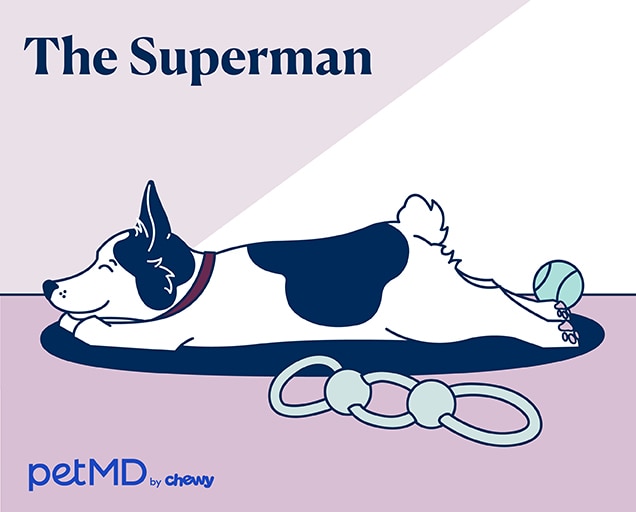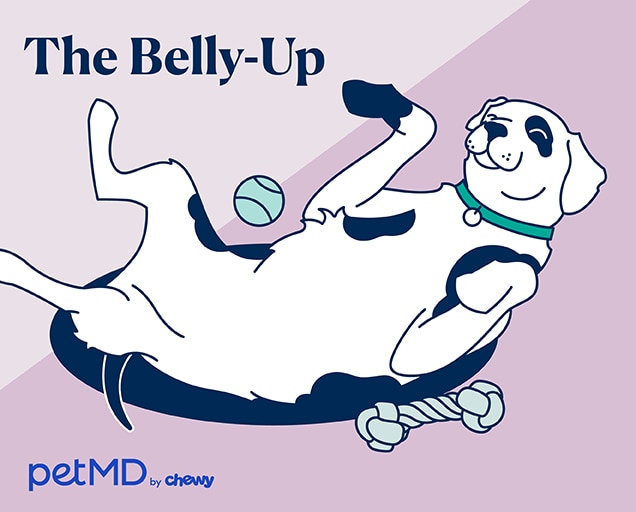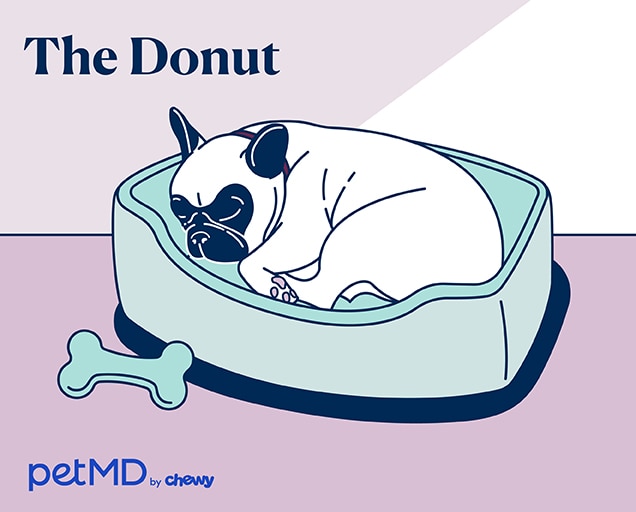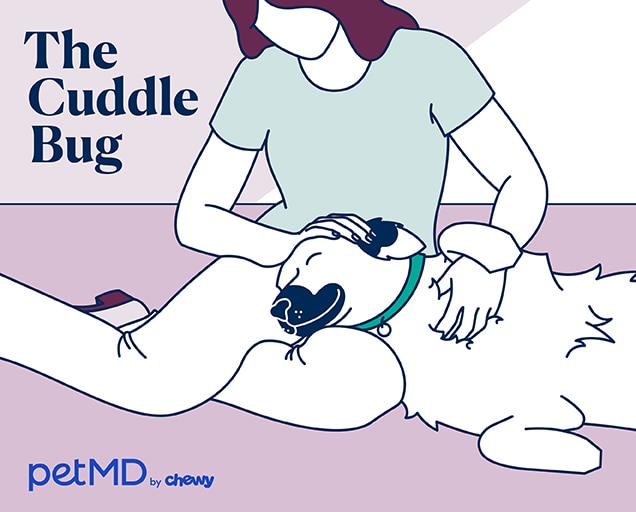6 Dog Sleeping Positions and What They Mean
iStock/Evrymmnt
If you’re a pup parent, you’ve probably noticed that dogs sleep in a variety of positions—which may or may not look very comfortable to us. “In most cases, which position they choose likely depends on their preference in the moment,” says Dr. Patrik Holmboe, head veterinarian at Cooper Pet Care. “However, there are a few tidbits of information that can be gleaned from a sleeping position.”
So, what do your dog’s sleeping positions mean?
Key Takeaways
- A dog’s sleeping position can indicate comfort, health, or their emotional state.
- Belly-up and side sleepers usually feel relaxed and secure.
- Donut and lion poses can signal alertness, anxiety, or a need for warmth.
- Providing the right bed for your dog’s preferred sleep position helps to support their comfort and health.
1. The Side Sleeper

A common sleeping position for humans, dogs also enjoy sleeping on their sides with their limbs extended and their bellies partly exposed. Because bellies are a vulnerable part of the body, this sleeping position generally indicates a pup feels calm and content, Holmboe says. They’re likely sleeping deeply, and you might even see dreamy paw twitches.
Pups who snooze in this position are typically happy-go-lucky and can plop down just about anywhere, although they’d prefer a large bed like the FurHaven Ultra Plush Luxe Lounger. It lets them sprawl in comfort and offers orthopedic support.
Weather can also factor into your dog’s sleeping position. If it’s a hot day and you notice your pup sprawling on the cool tile, they’re trying to cool down. When that’s the case, consider offering a cooling pad, like this self-cooling one from Arf Pets.
2. The Lion Pose

In the lion pose, sometimes called the sphinx pose, pups who are just falling asleep and want to stay alert might sleep belly down with their head perched on their front paws.
Lion-pose pups are alert, loyal, and caring toward their families. If you have a newborn at home, don’t be surprised if your furry companion assumes this position at the foot of their bed.
To keep your pup comfortable, give them a cozy place to rest their paws, like the Frisco Quilted Orthopedic Pillow Lounger.
This dog sleeping pose may also indicate your pup is anxious and ready to jump up at a moment’s notice. When anxiety is at play, a calming bed like The Original Calming Shag Fur Donut Cuddler from Best Friends by Sheri can help your dog feel calm.
3. The Superman

Holmboe says French Bulldogs and Pugs are often seen enjoying the superman pose when asleep. Stomach down with back legs straight out behind them and front legs stretched forward, these pups are just as silly as their sleeping position.
They’re also brimming with energy, so you’ll need a bed that can be used indoors or outdoors while enjoying your mischievous canine's playful antics, such as the Frisco by Chewy Steel-Framed Elevated Dog Bed.
4. The Belly-Up

Dubbed “the dying cockroach,” Holmboe says this pose is a favorite of Greyhounds, as well as other lovable canines. You’ll find dogs in the belly up pose sleeping on their backs with their bellies fully exposed and legs in the air. These dogs are playful and loving—or they’re still puppies.
You might wonder how this position could be comfortable and if it’s safe for your pup, but Holmboe assures us that dogs typically don’t choose to sleep in uncomfortable positions. However, as dogs age, they may switch to another posture, such as the side sleeper, since belly-up sleeping can put pressure on the spine.
This FurHaven Plush Deluxe Chaise Orthopedic Dog Bed offers two bolstered sides for optional neck and head support. It's made of orthopedic foam to take pressure off your pup’s back and continues supporting their joints as they age and swap sleeping positions.
5. The Donut

Curled up in a tight ball, dogs in the donut pose have their limbs tucked close to their bodies, their nose near the tail. These pups are sweet and caring, but they tend to be reserved around strangers or are settling into their new homes. This sleeping posture also traps body heat, so a curled-up canine might be cold.
The K&H Pet Products Thermo-Pet Heated Bolster Dog Bed is a great choice for dogs who sleep in the donut position. The bolstered sides offer security, and the bed can be plugged in to auto-heat to fit your dog’s optimal temperature.
“A dog that feels unwell might also be curled up in a ball,” Holmboe says. So, if this is an unusual position for your dog, keep an eye on them and consider scheduling a check-up with your veterinarian.
6. The Cuddle Bug

Holmboe says there’s nothing wrong with letting your dog sleep in bed with you—and that’s just the vibe the cuddle bug dog is striving for. However, if you prefer not to let your dog sleep in your bed, they’ll also happily curl up with you on the couch or with another pet.
These pups tend to love everyone they meet, furry or not, and might be called Velcro dogs by some.
Dogs should have a bed to call their own. However, the cuddle bug dog might enjoy the Best Friends by Sheri Throw Shag Dog & Cat Blanket. They can take it wherever they want to cuddle, and it’s big enough for them and a furry friend.
Dogs sleep a lot (16–20 hours per day for puppies!), Holmboe says. So, don’t be surprised to see your pup enjoying more than one of these silly sleepy positions at any time of day.
